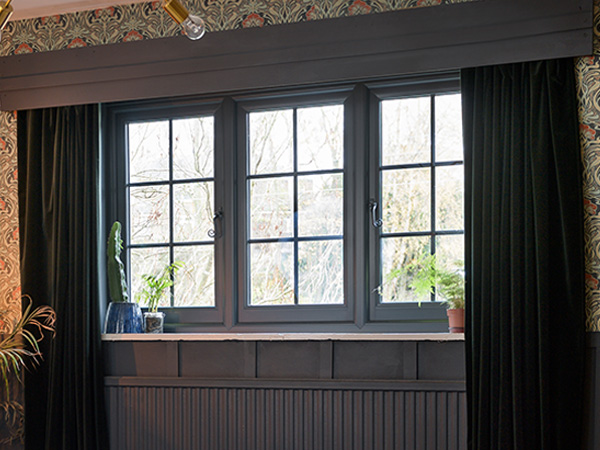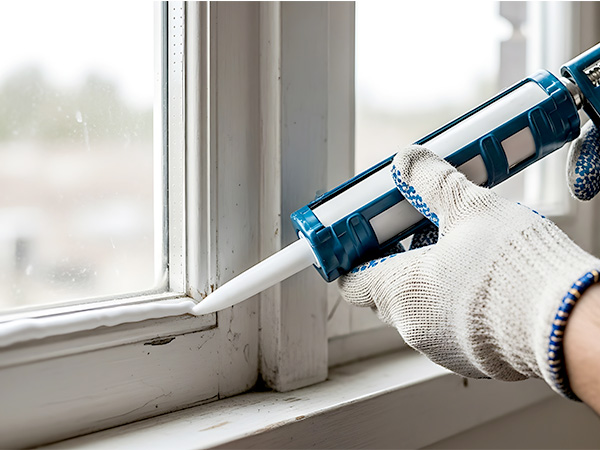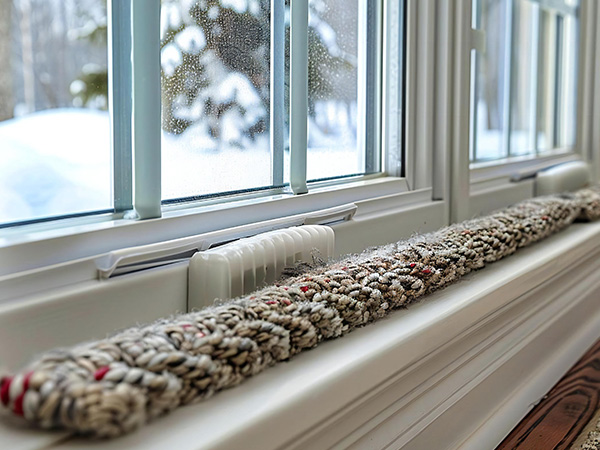If you’re looking to keep the chill out this winter and beyond, the most effective step is to replace old, inefficient windows with modern, energy-efficient ones.
Even so, there are simple ways to enhance the insulation of high-performance double glazed windows, helping them hold onto more heat and cut energy costs over time.
In this blog, we’ll explore practical tips and tricks to show you how to insulate windows effectively, maximise their performance, and keep your home cosy, efficient, and comfortable all year round, especially during the colder months from November through March.
Signs Your Windows Will Need Replacing Soon
Spotting condensation in between your window panes, feeling constant draughts, or identifying chilly spots in certain rooms are all signs that your windows may not be performing as they should.
Other warning signals include cracks, warped frames, or windows that are tricky to open and close. These issues all point to inefficient windows that are letting heat slip away.
Upgrading to modern, energy-efficient double-glazed window styles can improve insulation, boost comfort, and help reduce energy loss, keeping your home warmer and more efficient all year round.
Replacement vs. Insulation - Cost and Payback
As winter sets in, you might wonder whether adding extra insulation is enough, or if getting replacement windows is the smarter move. Older windows, especially single-glazed units or those with worn frames, often let more heat escape than insulation alone can prevent.
While boosting insulation may seem like the cheaper short-term fix, it won’t address the inefficiency of ageing or damaged windows. The real decision comes down to weighing upfront cost against long-term savings.
For windows that are decades old, upgrading to modern, energy-efficient units usually offers a better return on investment. These windows improve U-values, cut draughts, enhance comfort, and lower energy bills year after year. With energy prices rising, a smart window upgrade can pay for itself sooner than you might think.
5 Different Ways to Insulate Windows for Winter
Even if you’re in possession of newer energy efficient windows, a little extra insulation can make a noticeable difference during the colder months. The six practical techniques listed below will help keep warm air in and cold draughts out, with options to suit a range of budgets and situations. If you’re wondering how to insulate windows for winter, you’re going to want to read on.
1. Window Film
Insulating window film creates an additional layer over your glass, helping to reduce heat loss through conduction. It’s an ideal solution for renters or anyone seeking a temporary fix without major installation.
The film is easy to apply using a hairdryer and just as simple to remove later, yet it can make a noticeable difference to indoor comfort. It works particularly well on single-glazed windows, keeping warmth in while still allowing natural light to fill your rooms.
Many films also offer UV protection, helping to prevent fading on your furniture and flooring. When applied carefully, insulating window film can reduce winter heat loss by up to 30%.

2. Thermal Curtains and Blinds
Thick, dense fabrics and thermal blinds help trap warm air close to your windows, reducing heat loss while adding a stylish touch to any room. Available in a wide range of colours, fabrics, and designs, they combine practicality with aesthetic appeal.
For draughty rooms or south-facing windows, heavier materials like velvet or lined curtains work particularly well. Thermal blinds are perfect for smaller windows or spaces where full-length curtains aren’t practical.
In addition to improving window insulation, they offer extra privacy and can help reduce outside noise. To get the most benefit, keep your curtains or blinds closed at night and open them during sunny days to let natural warmth in.

3. Caulking and Weatherstripping
Sealing gaps around window frames is a simple but highly effective way to reduce draughts and energy loss. Older wooden or metal frames are often the worst offenders, particularly if you notice cold air slipping through cracks.
Weatherstripping is quick to apply and easy to remove, making it a flexible option for any homeowner. Caulking offers a more permanent solution, ideal for long-term window insulation.
Checking and refreshing these seals regularly ensures your windows continue to perform efficiently, keeping your home warmer and more comfortable throughout the winter months.

Request Your Free Window Quote
Simply fill in your details for your free, no obligation quotation
4. Bubble Wrap Insulation
Bubble wrap is an affordable and surprisingly effective way to add temporary insulation to windows. Simply cut it to size and stick it to the inside of the glass with water or double-sided tape. The trapped air pockets help slow heat loss and keep your home warmer.
It’s a great solution for rental properties or any windows you don’t want to alter permanently. While it’s not the most decorative option, it can easily be hidden behind curtains or blinds.
To maintain its effectiveness throughout the season, replace or reapply the wrap as the bubbles start to deflate.

5. Secondary Glazing
You may be familiar with double and triple glazing, but secondary glazing works a little differently. It adds an extra pane of glass or acrylic inside your existing window frame, creating a thermal buffer that helps keep heat in.
This method is particularly useful for older or heritage windows, improving window insulation without the need to replace the originals. It also reduces outside noise, offering both warmth and a quieter home.
Over time, secondary glazing can pay for itself by lowering energy bills and boosting overall comfort throughout the year.

6. Draught Excluders and Insulation Tape
Simple draught excluders or insulation tape can seal gaps around window frames where cold air sneaks in. They’re affordable, easy to install, and provide a quick improvement in comfort.
These solutions are ideal for older or imperfectly sealed windows and can be applied in just a few minutes with minimal effort. They’re especially effective on sliding sashes, doors, and the bottoms of windows.
When used alongside other methods, such as thermal curtains, they can make a noticeable difference to room warmth. Regularly checking and replacing them ensures they continue to perform well throughout the winter months.

Why Window Insulation Still Matters
Even with modern, energy efficient windows, adding extra insulation can make a noticeable difference to your home’s comfort, especially if they have a low u value. If you are wondering what is a good u value for windows, speak to our team of advisors.
Learning how to insulate windows from cold air isn’t just relevant for older properties – any home can benefit from measures that trap warmth, reduce draughts, and maintain a steady indoor temperature.
Beyond comfort, effective window insulation can help lower energy bills, particularly during cold winters when heating demand is high. It also protects your home from sudden weather extremes, reduces strain on your heating system, and can extend the lifespan of your windows.
Combined with energy-efficient glazing, small steps such as thermal blinds, draught-proofing, or insulating film deliver cumulative benefits, making your home warmer, more energy efficient, and cost effective.
Window insulation is a simple, affordable way to boost comfort and savings all winter long.